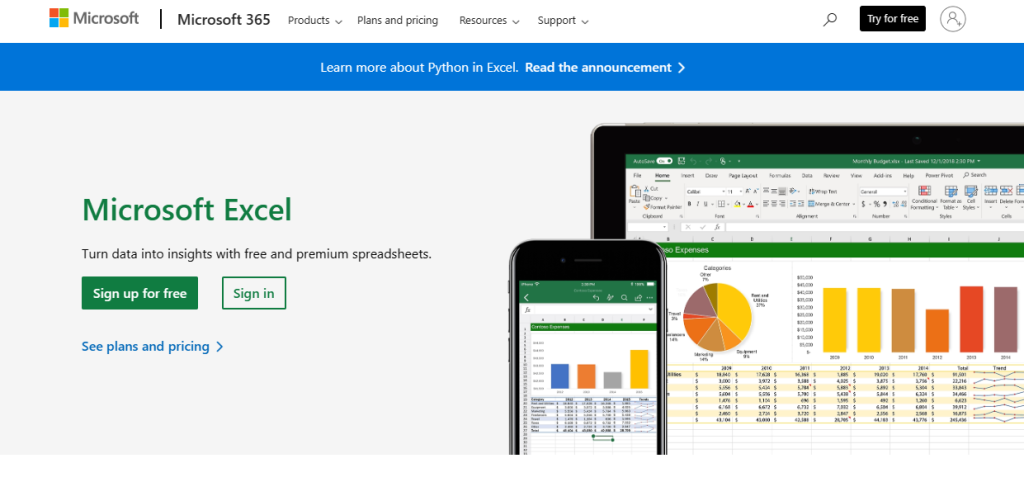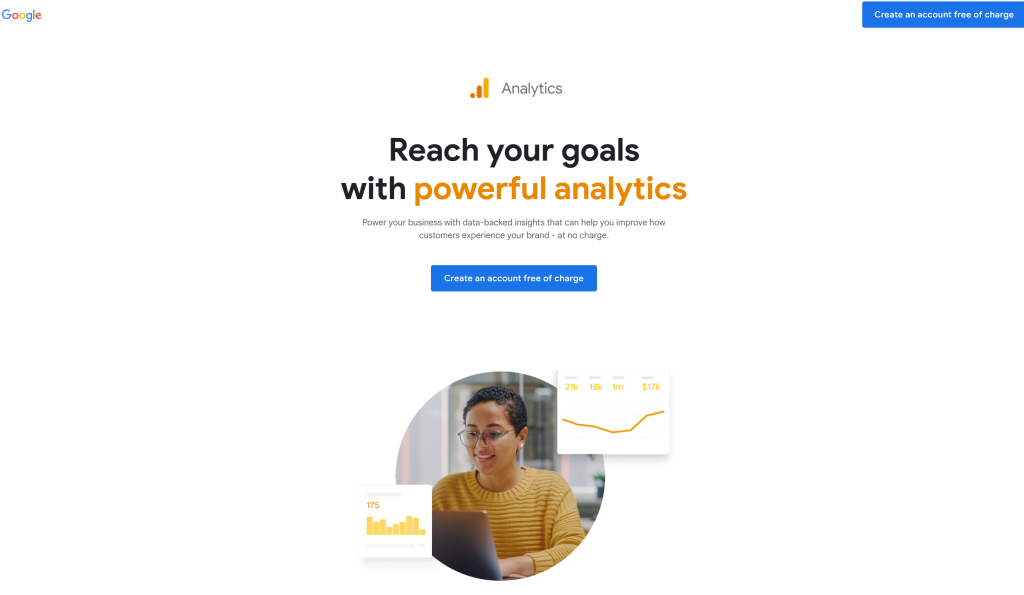Las mejores herramientas de Business Analytics: Las 7 mejores revisadas (2024)
In the contemporary business landscape, the adoption of robust business analytics tools is no longer a luxury but a necessity for achieving operational excellence and maintaining a competitive edge. The array of options available, from SAS’s advanced data management capabilities to Tableau’s intuitive data visualization features, underscores the importance of selecting a tool that aligns with an organization’s specific analytical needs and strategic goals.
As we navigate through the nuances of these platforms, a critical question emerges: How does one determine which tool is the most conducive to fostering business success? This inquiry sets the stage for a comprehensive exploration of the functionalities, benefits, and strategic applications of leading business analytics tools, guiding organizations in making informed decisions that propel them towards their objectives.
Principales conclusiones
- Business analytics tools like SAS, Tableau, and Excel drive informed decisions and business growth.
- Tools vary in functionality: Excel is crucial for data summarization, while Google Analytics excels in web traffic analysis.
- The choice of analytics tool depends on specific business needs, with options ranging from QlikView to Microsoft Power BI.
- Effective use of business analytics tools can identify trends, anticipate future needs, and enhance profitability.
Understanding Business Analytics
Business analytics involves the strategic use of data and statistical methods to gain insights and improve decision-making within an organization. By analyzing historical and current data, businesses can identify trends, patterns, and potential issues that could affect their operations and profitability. This analytical approach enables organizations to make more informed, data-driven decisions, rather than relying on intuition or guesswork.
Business analytics encompasses a variety of techniques, including data mining, statistical analysis, and predictive modeling, to help companies understand their business environment better. As a result, organizations can optimize their processes, increase efficiency, and achieve their strategic goals more effectively. The application of business analytics is becoming increasingly crucial in a competitive market, where leveraging data can lead to significant advantages.
Key Functionality Explored
Understanding the strategic use of data and statistical methods sets the stage for exploring the key functionalities of business analytics tools, which are instrumental in harnessing the full potential of data-driven decision-making. At the core of these tools is the ability to identify trends and patterns, enabling businesses to anticipate future needs and uncover opportunities.
This predictive capacity is crucial for strategic planning and operational efficiency. Moreover, business analytics tools facilitate enhanced decision-making through the visualization of data, making complex information understandable at a glance. They also offer the capability to perform what-if analysis, allowing companies to simulate different scenarios and predict their outcomes, thereby preparing for various business contingencies.
This multifaceted functionality underscores the vital role of business analytics in achieving growth and maintaining competitive advantage.

SAS: Advanced Data Management
In the realm of advanced data management, SAS stands out for its comprehensive suite of software solutions designed to facilitate in-depth analytics and predictive analysis. As a leader in the business analytics domain, SAS offers functionalities that cater to a wide array of data management needs. These functionalities not only ensure data accuracy but also enhance the efficiency of data processing and analysis.
- Robust Data Management: Offers tools for data quality, integration, and governance.
- Predictive Analytics: Empowers businesses with predictive modeling and decision-making capabilities.
- Customizable Solutions: Tailors analytics solutions to industry-specific requirements.
- Scalability: Efficiently handles large datasets, making it suitable for enterprises of all sizes.

Tableau: Intuitive Data Visualization
Following the exploration of advanced data management with SAS, we now turn our focus to Tableau, a leader in intuitive data visualization. Tableau has carved a niche for itself by democratizing data visualization, making it accessible and understandable for users regardless of their technical background.
Its drag-and-drop interface simplifies the process of creating complex graphs and charts, enabling users to discover patterns and insights visually. This tool excels in connecting to various data sources, offering real-time data updates, and allowing for the creation of interactive dashboards.
For businesses seeking to make data-driven decisions without investing heavily in training, Tableau stands out as a powerful, user-friendly option. Its ability to handle large datasets and perform advanced analytics makes it indispensable for modern business intelligence strategies.

Excel: Essential Analytics Tool
Excel emerges as a cornerstone in the realm of business analytics, offering a suite of advanced tools for comprehensive data analysis and decision-making support. Its ubiquitous presence in the business world is not by accident; Excel’s capabilities for handling complex datasets, performing statistical analysis, and its pivot table functions make it indispensable for analysts and business owners alike. Its flexibility and accessibility further cement its status as a vital tool in the analytics toolkit.
- Pivot Tables for summarizing data efficiently
- Advanced formulas for complex calculations
- Data visualization tools for insightful charts and graphs
- Compatibility with a wide range of data sources for seamless integration
Excel’s comprehensive feature set ensures it remains a critical tool for anyone looking to derive meaningful insights from their data, supporting informed decisions that drive business success.

QlikView: Predictive Analytics Simplified
Demystifying the complexities of predictive analytics, QlikView offers a streamlined approach that empowers users to leverage data insights without the need for extensive programming knowledge. Its intuitive interface and robust analytics engine allow for deep dives into data, making it a go-to tool for businesses aiming to harness the power of their data for predictive insights. This user-friendly platform bridges the gap between traditional data analysis methods and advanced predictive analytics, enabling a wider range of professionals to make informed decisions.
| Feature | Description | Benefit |
|---|---|---|
| Intuitive Design | Simplified user interface for easy navigation | Enhances user experience |
| Advanced Analytics | Leverages machine learning for deeper insights | Improves decision-making |
| Quick Deployment | Minimal setup required | Reduces time to insight |
| No Programming Knowledge Required | Accessible to users at all technical levels | Broadens user accessibility |
Through these features, QlikView simplifies predictive analytics, making it an indispensable tool for businesses looking to stay ahead in a data-driven world.

Google Analytics: Web Traffic Insights
Google Analytics stands as a paramount tool for analyzing web traffic and understanding user behavior, offering insights that are crucial for digital marketing success. This comprehensive tool provides a wealth of data, enabling businesses to refine their online strategies based on concrete metrics. Its capabilities are vast, but some of the most impactful features include:
- Real-Time Tracking: Monitor user activity as it happens on your site.
- Audience Demographics: Understand the age, gender, and interests of your site visitors.
- Traffic Sources: Identify where your visitors are coming from, whether it’s search engines, social media, or direct visits.
- Behavior Flow: Visualize the path visitors take through your site, highlighting what attracts their attention and where you might be losing their interest.

SAP Business Intelligent Software
SAP Business Intelligence Software is a powerful tool designed to enhance business operations and decision-making processes. Offering predictive analytics and seamless integration with various data sources, including SAP applications, databases, and third-party systems through machine learning, this software empowers users to gain valuable insights.
Its user-friendly interface and customizable features cater to businesses of all scales. With capabilities to generate reports, dashboards, and visualizations, SAP Business Intelligence Software equips business owners with comprehensive data analysis, facilitating informed decision-making.

Microsoft Power BI
Microsoft Power BI is a cloud-based business intelligence solution aimed at empowering businesses to harness the potential of their data. With its comprehensive set of features, it simplifies data collection, analysis, and visualization from diverse sources. Through reports, dashboards, and visualizations, Microsoft Power BI facilitates deep insights, enabling informed decision-making for business owners.
This robust tool serves as a pivotal asset for enhancing business intelligence capabilities, making it an optimal choice for those seeking to elevate their data-driven decision-making processes.
Benefits and Applications Highlighted
Understanding the comprehensive insights provided by business analytics tools like Google Analytics & Power BI, it becomes essential to explore the tangible benefits and diverse applications of business analytics in enhancing business decision-making and growth.
These tools offer a myriad of advantages, from identifying trends and patterns that inform strategic planning to anticipating future needs, thereby ensuring a proactive approach to market changes. Business analytics tools facilitate a data-driven culture, empowering organizations to make informed decisions that drive profitability and operational efficiency.
Their applications span various departments, including marketing for campaign analysis, finance for forecasting and budgeting, and operations for process optimization. Ultimately, leveraging business analytics tools can significantly contribute to a company’s competitive edge and sustainability in today’s data-centric business environment.
Choosing the Right BI Tool
Selecting the appropriate business intelligence (BI) tool is pivotal for organizations aiming to harness the full potential of their data analytics capabilities. The right BI tool can transform raw data into actionable insights, driving smarter business decisions and strategic actions.
However, with a plethora of options available in the market, making the right choice can be challenging. Considerations should include:
- Integration capabilities with existing systems and data sources
- Scalability to grow with your business needs
- User-friendliness to ensure wide adoption across non-technical team members
- Customization and flexibility to tailor analytics and reports to specific business requirements
Google Analytics Vs. Excel Comparison
Comparing Google Analytics and Excel reveals distinct capabilities and applications in the realm of business analytics. Each is tailored to different aspects of data analysis and reporting.
Google Analytics excels in tracking and analyzing web traffic, providing insights into user behavior, engagement, and conversion rates. It is particularly useful for digital marketing efforts, offering real-time data and trends essential for optimizing online presence.
On the other hand, Excel stands out for its versatility in handling diverse datasets, performing complex calculations, and creating detailed custom reports. Its functionality in data manipulation, including pivot tables and advanced analytics capabilities, makes it indispensable for financial analysis and operational reporting.
Choosing between them depends on the specific analytical needs and goals. Google Analytics focuses on web-based insights, while Excel caters to comprehensive data analysis and reporting.
Conclusion
In conclusion, the selection of an appropriate business analytics tool is pivotal for harnessing data to drive organizational success.
With tools like SAS offering advanced data management, Tableau providing intuitive data visualization, Excel serving as an essential analytics instrument, and Google Analytics delivering vital web traffic insights, organizations are well-equipped to make informed decisions.
The strategic deployment of these tools, based on specific business needs and objectives, can significantly enhance operational performance and competitive edge in today’s dynamic business environment.







